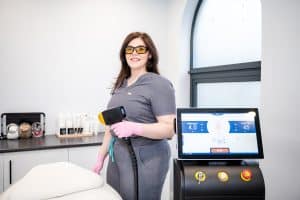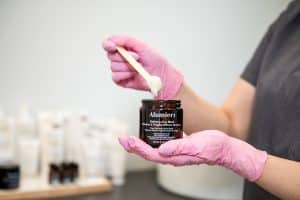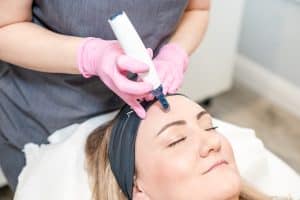
Is Laser Hair Removal Worth the Investment?
Is Laser Hair Removal Worth the Investment? Delving into the Value of Laser Hair Removal: Assessing Treatment Worth Laser hair removal has become a popular
blog post
Most people think you should only wear SPF on holiday to protect your skin from the sun. Would you be shocked to know you should wear it every day, even when you are indoors? In this article I will give you a little more information about protecting your skin from the sun.
So, SPF actually stands for Sun Protection Factor and it measures the actual protection you get from UVB rays. SPFs are rated on a scale of 2 to 50+ with 50+ having the strongest form of UVB protection. A sunscreen with a minimum 30+ rating is recommended. However, you need a sunscreen that offers protection against UVB and UVA rays.
You might have seen the star rating on the bottle of sun cream on your last holiday. The more stars, the better protection. The NHS recommends only using cream with a rating of 4 or more.
When buying a sunscreen look for one label “broad spectrum” or with both an SPF rating of 30+ and a UVA rating of 4 stars and above.
What is the difference between UVA and UVB?
This infographic will break it down for you.

The picture sums up the importance of adequate sun protection at all times but what else can you do when you are in the sun to protect your skin.
1. Wear a wide brimmed hat
2. Spend time in the shade between 11am-3pm
3. Cover up with adequate clothing and sunglasses
4. Avoid burning and take extra care if you have a lot of moles or are freckly.
There are two different types of sunscreen.
Depending on the mode of action, sunscreens can be classified into physical sunscreens or chemical sunscreens.
Physical sunscreens use minerals filters to block the UV rays from being absorbed by the skin and scattering them. These sunscreens use zinc oxide or titanium dioxide and are often quite thick and white. They are heavy on the skin so aren’t the best for people with oily skin.
Chemical sunscreens are the easiest to get hold of and the majority of them on the supermarket shelves are this kind. These sunscreens contain active sun filters that penetrate the skin and absorb UV rays to prevent them from causing damage. They are much more suitable for daily wear.
So most importantly sunscreen protects your skin from sun damage and skin cancers such as basal cell carcinoma and squamous cell carcinoma.
Why do I have to wear SPF after my Laser Hair Removal session?
After Laser Hair Removal you should wear sunscreen for at least 30 days after your treatment. If you are having a course of treatments done then you should wear SPF every day until 30 days after your last treatment. It is best to avoid sunlight all together but this is impractical.
This is because your skin is much more sensitive to the UV rays after your session. The laser is a very concentrated beam of light which leaves the skin vulnerable after treatment putting you at risk of hyperpigmentation and other skin damage.
Got any questions. Drop me a message

Is Laser Hair Removal Worth the Investment? Delving into the Value of Laser Hair Removal: Assessing Treatment Worth Laser hair removal has become a popular

Is A Chemical Peel Worth It? Unlocking the Benefits of Chemical Peels: Evaluating Treatment Worth Chemical peels have long been a staple in skincare regimens,

What is the Success Rate of Microneedling? Exploring Microneedling Success: Understanding Treatment Efficacy Microneedling has garnered attention as a promising skincare treatment, praised for its

Is Microneedling Actually Good For Your Skin? Unveiling the Benefits of Microneedling: A Closer Look at Skincare Advantages Microneedling has emerged as a popular skincare